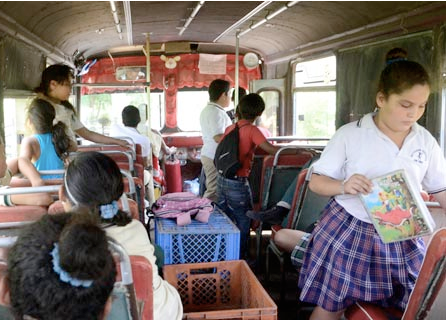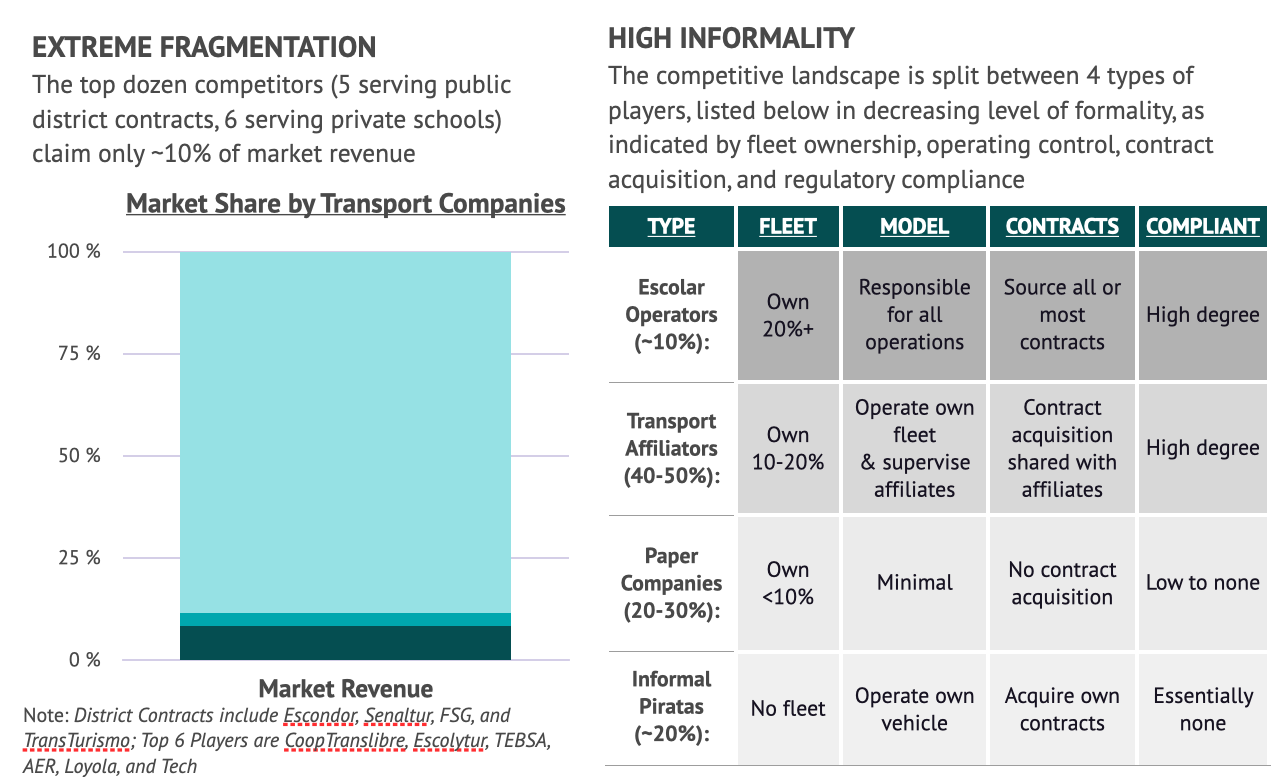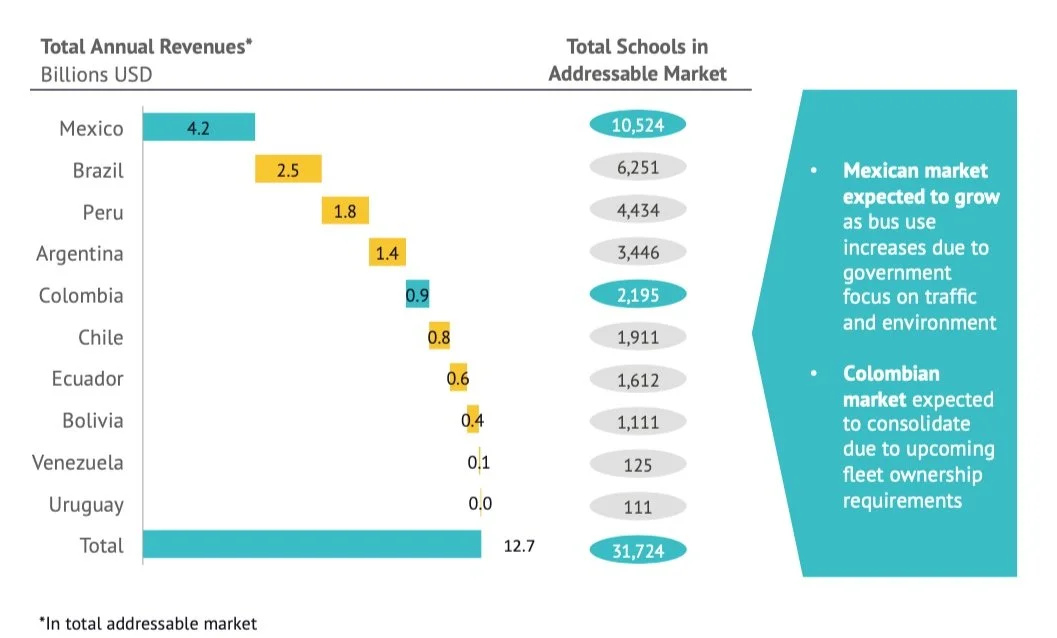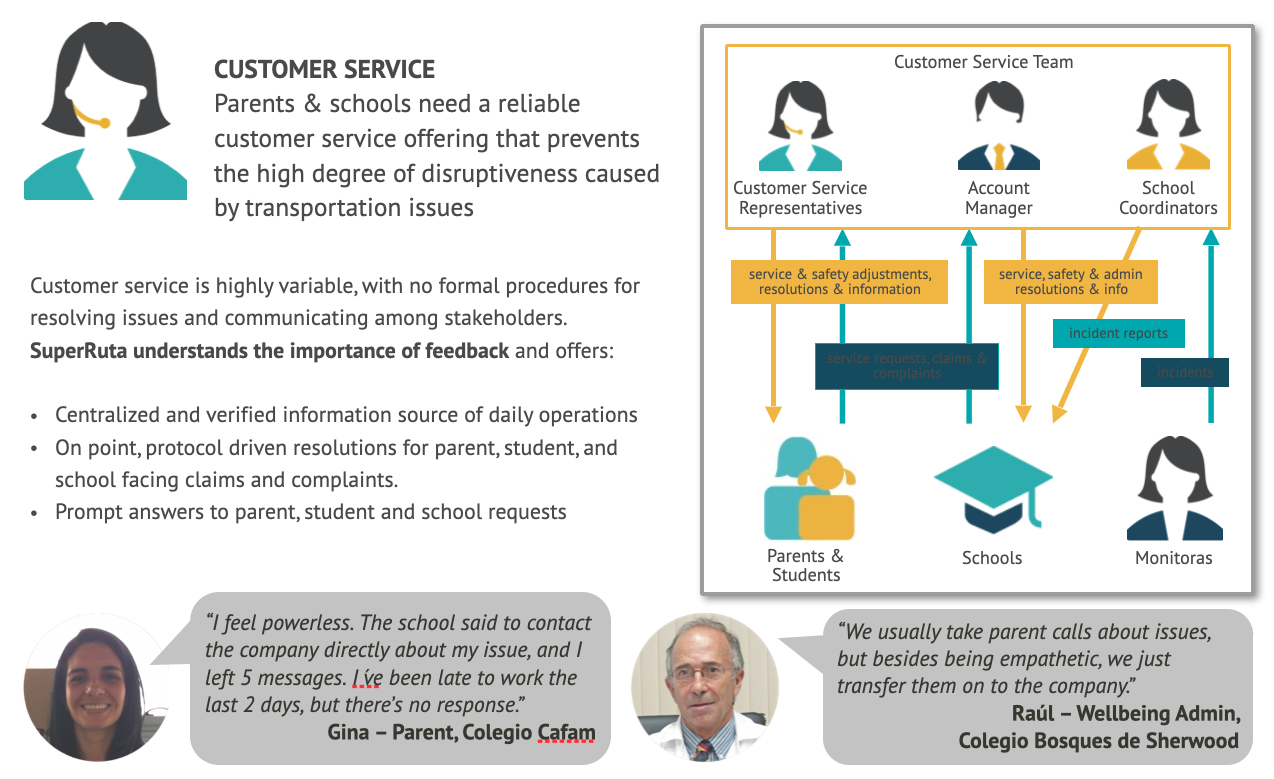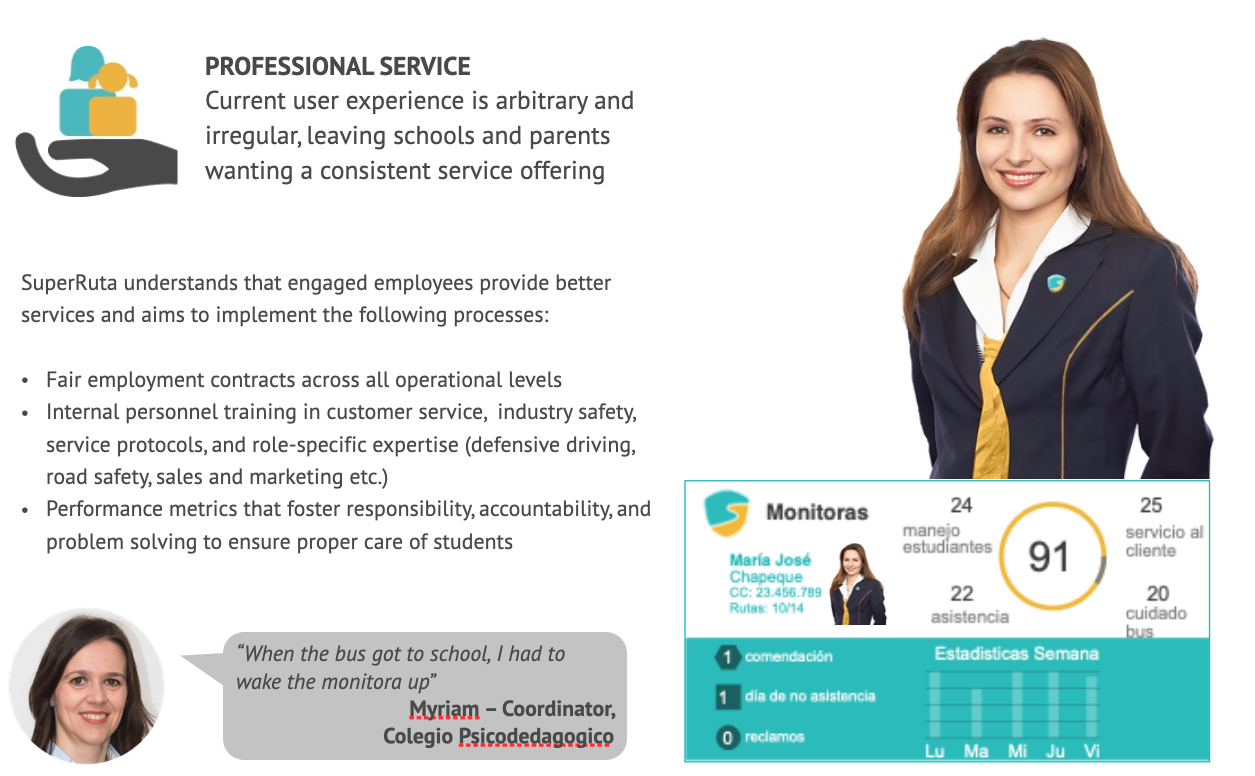The Challenge
Despite rising middle-class consumer expectations, problems with safety, dependability, and consistency persist in the school transportation market.
SuperRuta: Transforming the School Transport Service in LatAm
The Outcome
A co-op-based school transportation service with dependable operations, professional staff, and reasonable prices.
As a Lead Business Designer at Polymath Ventures, I was able to work on the development of companies from the ground up for the Latin American market. I chose to highlight SuperRuta because I was involved in its creation as well as its demise. The idea for SuperRuta came from Polymath Venture's company building methodology, which is intended to create market-changing business models by identifying untapped opportunities to build a 10X better product through extensive user research.
To begin, we conducted over 40 in-depth user interviews with consumers in Colombia and Mexico, during which we asked them about their current employment, mobility, financial, health, and education challenges. A common theme among the parents we spoke with was an ongoing concern about their children's school transportation service, specifically the timing, safety, and cost. Based on this finding, we conducted a second round of interviews with parents (15), industry stakeholders (14), transportation companies (8), affiliate drivers (12), and experts, including representatives from Colombia's Ministry of Transportation, Mexico's Secretary of Road Infrastructure and Mobility, and two transport sector lawyers.
We also conducted field observations, during which we identified the concerns expressed by parents in real time, such as negligence in the enforcement of safety requirements, untrained staff, and risky informal solutions. The analysis of interview and observational data resulted in the identification of six major areas where current service options fell short.
Based on these findings, we developed an initial business model for the SuperRuta concept, which included a rigorous competitive analysis, existing industry business models, Latin American market sizing, a system map of current operations and stakeholders, a proposed growth strategy, regulatory issue identification, and an initial startup strategy timeline.
We then defined SuperRuta's value proposition for schools, parents, and drivers, and developed a pitch deck for each stakeholder. During a series of interviews (21 in total), we shared these with each stakeholder, including pricing graphs for parents, mock contracts for schools, and payment structures for drivers. The results of these interviews were extremely positive, with 8/10 parents selecting a pricing plan and requesting more information on when their school would be able to offer the service; 3/5 schools expressing interest in having us meet with their administrative offices to further the contract process; and 4/6 drivers signing mock letters of interest in joining the SuperRuta team.
The following stage involved determining which startup strategy would make the most sense, specifically whether to start a transportation company from scratch or to buy an existing one. Based on extensive research and business modeling, the economics of acquiring an existing company appeared to be more favorable than starting from scratch, with the ability to have a positive cash flow by year 2 rather than year 3 and begin operations sooner. Based on this decision, acquisition targets were identified and a transportation company was procured. Four months after purchase, operations began with the signing of two large school contracts. Once operations began, my role changed to one of on-demand user research, in which I was asked to conduct additional user research as needed to improve the service offering or change how we interacted with our staff or schools.
SuperRuta ran for 24 months before we realized we had a fleet utilization issue, which meant that in order to make our numbers work, the vehicles would have to run more routes than they were currently serving, which meant they would have to be used for something else during the school day. To address this issue, I was reassigned full-time to the team to help lead an 8-week re-design exercise in which we would go back to the drawing board, revisit our initial assumptions, and make any necessary changes to the current operating model. We began by speaking with stakeholders, including those who used the SuperRuta service or were part of the SuperRuta team, as well as a new cohort of parents, schools, drivers, and other administrative personnel who may be interested in transportation solutions such as hotels and casinos. Based on these 35 interviews, we developed a much more nuanced and detailed customer segmentation, a better understanding of the current market, and a go-to-market strategy that would include additional routes for our vehicles during the school day, such as transporting casino personnel and tourism ride shares.
After initial modeling and operational projections exercises, we realized that the risk of delays and missed deadlines would be too high due to the density of Latin American cities, their developing infrastructures, and heavy traffic. And, because SuperRuta's main value proposition was centered on providing a more professional, accountable, and affordable school bus service, doing so would imply providing a service that was very different from what had been market tested and envisioned.
As a result, it was decided that SuperRuta would cease operations. After the decision was made, I was asked to inform the rest of the Polymath organization about the venture's demise. It was one of the most difficult stories I've ever had to tell. A delicate balance of articulating the lessons learned, celebrating our passion and hard work, reflecting on our flaws, and allowing us to accept the contextual circumstances that were beyond our control.



